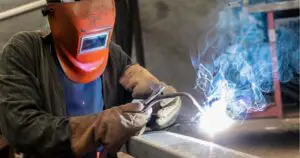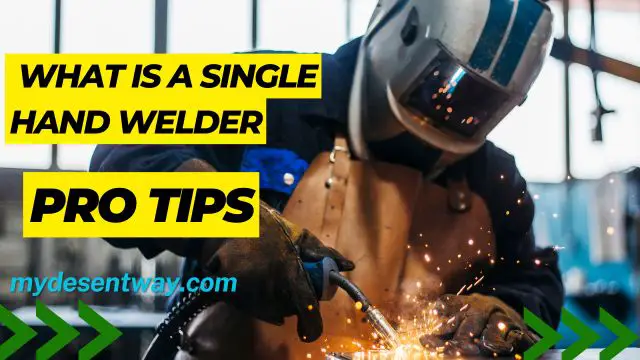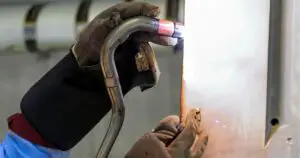Table of Contents
- What is a single-hand welder?
- 1. How Single Hand Welders Work
- 2. Applications and Industries
- 3. Advantages of Single-Hand Welders
- 4. Choosing the Right Single-Hand Welder
- 5. Safety Precautions
- 6. Maintenance and Care
- 7. Comparing Single-Hand Welders to Traditional Welding Tools
- 8. Future of Single-Hand Welding
- 9. Cost Considerations
- 10. Notable Brands and Models
- 11. Tips for Beginners
- 12. Common Misconceptions
- 13. Case Studies
- What Does a Single Hand Welder Do?
- Types of Single Hand Welders
- What Is a Single Hand Welder vs. Rig Welder?
- What Is a Single Hand Welder vs. Pipe Welder?
- Single Hand Welder Jobs
- Conclusion
- FAQ
In the world of welding, innovations never cease to amaze. One such innovation that has been gaining traction recently is the single-hand welder. This compact and versatile welding tool has revolutionized the way welding tasks are performed. In this article, we will delve into the world of single-hand welders, exploring their features, applications, advantages, and much more. Let’s explore “What is a Single Hand Welder” and its various facets. So, put on your safety gear, and let’s dive right in!

What is a single-hand welder?
A single-hand welder is a welding tool designed for one-handed operation, providing precision and control. It’s commonly used in industries like automotive and aerospace for its ability to weld in tight spaces. Single hand welders are known for their compact design and suitability for various materials.
1. How Single Hand Welders Work
These welders use advanced technology to generate a controlled electric arc that melts the welding material, creating a strong bond between the workpieces. The single-handed operation allows for precise control over the welding process.
2. Applications and Industries
Single-hand welders find applications in various industries, including automotive, construction, shipbuilding, and even DIY projects. Their versatility and ease of use make them suitable for both professionals and hobbyists.
3. Advantages of Single-Hand Welders
Portability: These welders are lightweight and easy to transport.
Ease of Use: The single-handed operation simplifies welding tasks.
Precision: Users can achieve precise welds due to the fine control.
Cost-Effective: They are often more affordable than traditional welding machines.
4. Choosing the Right Single-Hand Welder
Selecting the right single-hand welder depends on factors like the type of materials you’ll be welding, power requirements, and your skill level. Research thoroughly before making a purchase.
5. Safety Precautions
Safety should always be a priority in welding. Ensure you wear appropriate protective gear, work in a well-ventilated area, and follow safety guidelines provided by the manufacturer.
6. Maintenance and Care
Regular maintenance is essential to keep your single-hand welder in top condition. Cleaning, checking for wear and tear, and replacing worn-out parts are crucial for longevity.
7. Comparing Single-Hand Welders to Traditional Welding Tools
Single-hand welders offer advantages such as mobility and ease of use, but they may have limitations in terms of welding thicker materials. Consider your specific needs when comparing them to traditional welders.
8. Future of Single-Hand Welding
As technology continues to advance, we can expect even more innovations in single-hand welding, making it an increasingly viable option for a wide range of applications.
9. Cost Considerations
While single-hand welders are generally cost-effective, it’s essential to factor in the initial investment, maintenance costs, and potential savings in labor and materials.
10. Notable Brands and Models
Explore reputable brands and models in the market to make an informed choice when purchasing a single hand welder.
11. Tips for Beginners
If you’re new to welding, start with a single hand welder to learn the basics and gradually move on to more complex welding equipment.
12. Common Misconceptions
Addressing misconceptions about single hand welders, such as their limited capabilities, can help potential users make informed decisions.
13. Case Studies
Real-world examples of single hand welding projects can provide valuable insights into its practical applications.
What Does a Single Hand Welder Do?
A Single Hand Welder, often referred to as a one-handed welder, is a skilled professional responsible for executing welding tasks with exceptional precision, using only one hand. These welders are known for their ability to perform intricate and precise welding work in various industries, including construction, manufacturing, and shipbuilding.
Single hand welders are proficient in joining metals together using various welding techniques, such as MIG (Metal Inert Gas) welding, TIG (Tungsten Inert Gas) welding, and Stick welding. They play a crucial role in ensuring the structural integrity and safety of the projects they are involved in. Their work involves welding joints, seams, and components, often under challenging conditions.
Types of Single Hand Welders
Single hand welders come in different types, each specializing in specific welding techniques and materials. Some of the common types include:
- MIG Welders: These welders use the MIG welding process, which involves a continuous wire feed and a shielding gas to create strong and clean welds. They are often employed in industries requiring high-speed welding on materials like steel and aluminum.
- TIG Welders: TIG welders utilize the TIG welding process, which employs a non-consumable tungsten electrode and a separate filler material. They excel in precision welding on materials like stainless steel and exotic metals.
- Stick Welders: Stick welders, also known as SMAW (Shielded Metal Arc Welding) welders, are skilled at performing welding tasks using a consumable electrode coated in flux. They are versatile and can work with various metals, making them valuable in construction and maintenance.
What Is a Single Hand Welder vs. Rig Welder?
A common point of confusion is the difference between a single-hand welder and a rig welder. While both are skilled professionals in welding, they have distinct roles:
Single-Hand Welder: As mentioned earlier, a single hand welder is known for performing intricate welding tasks with precision, using only one hand. They typically work on smaller projects that require fine detailing and meticulous craftsmanship.
Rig Welder: Rig welders, on the other hand, are responsible for welding operations on a larger scale. They often work in the oil and gas industry, where they weld pipelines, rigs, and large structural components. Rig welders are usually involved in heavy-duty welding tasks.
What Is a Single Hand Welder vs. Pipe Welder?
Another common comparison is between a single hand welder and a pipe welder. Here’s the distinction:
Single Hand Welder: Single hand welders focus on welding various components, joints, and seams across different industries. Their work is not limited to pipe welding but extends to other welding tasks as well.
Pipe Welder: Pipe welders, on the other hand, are specialists in welding pipes and pipelines. They possess expertise in joining pipes of various materials, sizes, and specifications. Pipe welders are often required in industries like plumbing, construction, and oil and gas.
Single Hand Welder Jobs
Single-hand welders can find employment in various industries that demand precision welding. Some common job opportunities for single-hand welders include:
Construction: Welding structural components and joints in buildings and infrastructure.
Manufacturing: Assembling and welding metal parts for the production of machinery and equipment.
Shipbuilding: Welding ship components and hulls with exceptional accuracy.
Aerospace: Fabricating and welding intricate components for aircraft and spacecraft.
Single Hand Welder Salary
The salary of a single hand welder can vary based on factors such as experience, location, and the industry they work in. On average, single-hand welders in the United States can expect to earn between $40,000 and $80,000 per year. Highly experienced and specialized single-hand welders may earn even higher salaries.
Conclusion
In conclusion, “What is a Single Hand Welder” is a question that unveils a world of precision welding techniques. Whether you’re looking to enhance your welding skills or seeking a versatile welding solution, single-hand welders offer an array of benefits. Their compact design, enhanced control, and suitability for various applications make them a valuable asset in the welding industry.
So, if you’re ready to take your welding expertise to the next level, consider exploring the realm of single-hand welding. With the right training and equipment, you can unlock new possibilities in welding precision..
video bycruxweld tech
FAQ
Are single hand welders suitable for heavy-duty welding tasks?
Single hand welders are best suited for light to medium-duty welding tasks. For heavy-duty applications, traditional welding machines may be more appropriate.
Can beginners use single hand welders effectively?
Yes, beginners can use single hand welders effectively, thanks to their user-friendly design and ease of operation. However, Proper training and safety measures are crucial.
Do single hand welders require a specific type of power source?
The power source requirements may vary depending on the model. Some single hand welders operate on standard household electrical outlets, while others may require more robust power sources.
What are the key maintenance tasks for single hand welders?
Maintenance tasks include regular cleaning, checking for loose or damaged parts, and ensuring proper calibration. Check the manufacturer’s instructions for maintenance details.
Where can I purchase a reliable single hand welder?
You can find single hand welders at welding equipment stores, online marketplaces, and from reputable manufacturers and distributors. Do your research and read reviews to make an informed choice.


3 thoughts on “ What is a Single Hand Welder: A Comprehensive Guide”